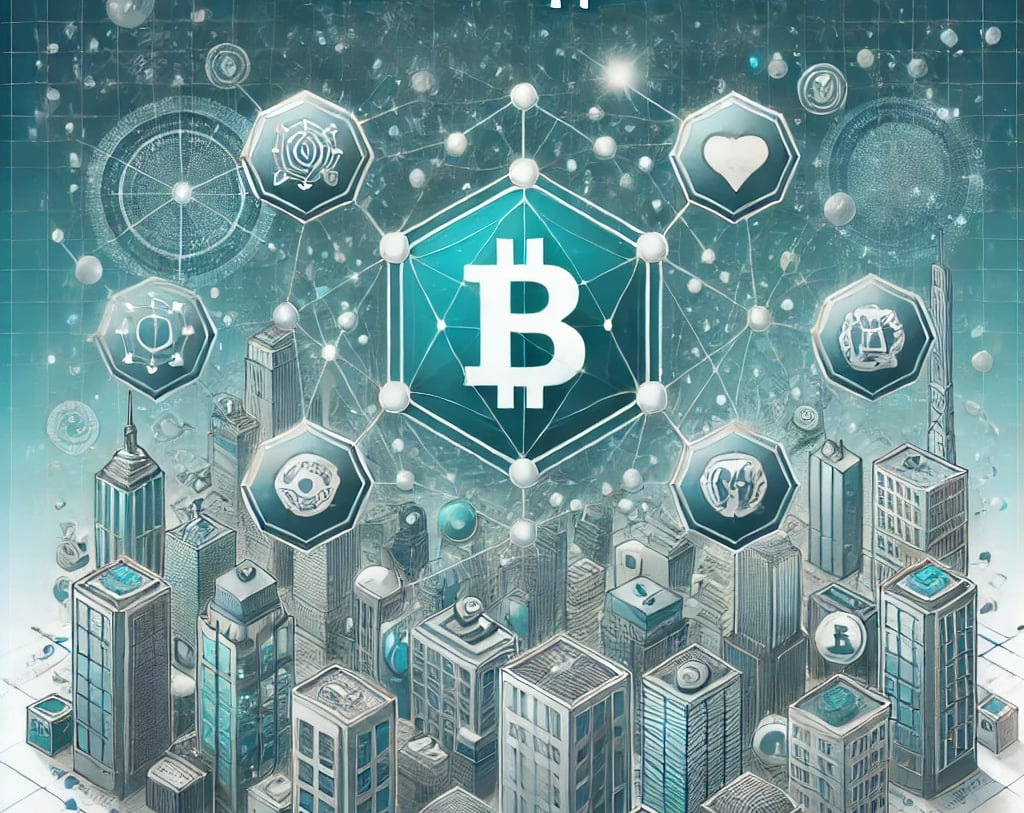Beyond Cryptocurrencies: Real‑World Blockchain Applications and Case Studies
INNOVATION AND EMERGING TECHNOLOGIES


Beyond Cryptocurrencies: Real‑World Blockchain Applications and Case Studies
When people hear “blockchain,” they often immediately think of Bitcoin and cryptocurrencies. However, this technology—essentially a distributed and immutable digital ledger—has found applications in many sectors beyond finance. A blockchain is like a shared ledger maintained by numerous independent nodes: every new transaction is recorded in a “block” cryptographically linked to the previous block, forming a chain. This cryptographic linking makes it virtually impossible to alter past data without invalidating subsequent blocks. This property has earned blockchain the nickname “The Trust Machine,” as popularized by The Economist.
Let’s examine several concrete and current examples of blockchain usage:
Food Supply and Traceability: Retail giants like Walmart have adopted blockchain (in collaboration with IBM) to trace food products from farm to shelf. In a pilot project, Walmart reduced the time needed to trace the origin of packaged mangoes from six days to just 2.2 seconds using a shared blockchain ledger with suppliers. This enables near‑instantaneous identification of, for example, the source of a contaminated batch—greatly enhancing food safety and recall management.
Diamond Provenance: De Beers, the world leader in diamonds, has implemented a private blockchain to certify every step in the journey of extracted diamonds—from the mine, through cutters, to the jeweler. This ensures that a diamond is not a “blood diamond” (sourced from conflict zones) and provides customers with proof of its ethical and authentic origin—a historic challenge for the luxury industry.
Supply Chain and Logistics: Maersk, the global shipping giant, partnered with IBM to develop TradeLens, a blockchain platform that digitizes shipping documents and tracks goods in real time. Although TradeLens faced challenges and is no longer operational, it demonstrated potential benefits: reducing paperwork, minimizing discrepancies, and offering shared visibility of shipment statuses for all parties (shippers, customs, ports, carriers). Other companies are iterating on similar ideas.
Energy Sector: Some utilities are experimenting with blockchain to manage electricity distribution networks and facilitate peer‑to‑peer energy trading. In certain neighborhoods, for instance, excess solar energy produced by one household can be sold directly to a neighbor, with the transaction recorded on a blockchain—eliminating the need for a central intermediary.
Public Administration and Digital Identity: Estonia is renowned for integrating blockchain (specifically, the KSI blockchain) into its e‑government systems. Public registries—such as health, land, and judicial records—use blockchain technology to ensure data cannot be tampered with. Every change is timestamped and anchored on the blockchain, ensuring verifiability and non‑repudiation. The result is a more transparent administration where citizens can see who has accessed their data and trust the integrity of state information.
Art and Digital Certificates (NFTs): Beyond the speculative bubble, non‑fungible tokens (NFTs) have opened up a new avenue for digital authenticity certificates for art, collectibles, and virtual assets. An artist, for example, can “tokenize” a digital painting, with the NFT serving as a unique certificate of ownership. Auction houses like Christie’s have sold digital art NFTs for millions. In the future, similar concepts could apply to documents such as property titles, diplomas, or insurance certificates—making them easily transferable and nearly impossible to counterfeit.
There are challenges, however. For blockchain to be effective, it requires shared participation and trust among ecosystem players. In some cases (such as TradeLens), getting everyone on board is difficult, especially when a central sponsor (like Maersk) is involved and others perceive a risk of dependency. Additionally, public blockchains suffer from scalability issues—Bitcoin and Ethereum struggle to process thousands of transactions per second due to their distributed consensus—and high energy costs if based on Proof‑of‑Work. Many enterprise applications instead use private or permissioned blockchains with lighter consensus mechanisms (such as Proof‑of‑Authority) to mitigate these issues.
In conclusion, blockchain is proving to be a versatile innovation that shifts trust from a central authority to the network itself. There is no longer a need for a single entity to vouch for the truth of data; trust is collectively validated by all network nodes that verify each block. Beyond cryptocurrencies, applications in traceability, smart contracts, and digital identity promise to make processes more transparent, efficient, and secure. Although many of these uses are still in early experimental stages, current trends—especially in supply chain and public services—indicate that blockchain may become a foundational trust infrastructure in tomorrow’s digital systems, much like the Internet is for communications.
Bibliography:
Walmart Global Tech – “Blockchain in the food supply chain” (2020).
LF Decentralized Trust – “Walmart-IBM food traceability case” (2018).
Walmart Tech Blog – “Supply chain blockchain examples” (2020).
e-Estonia – “KSI blockchain” (2021).
MIT News – “La blockchain è La macchina della fiducia” (2015, citato da The Economist).